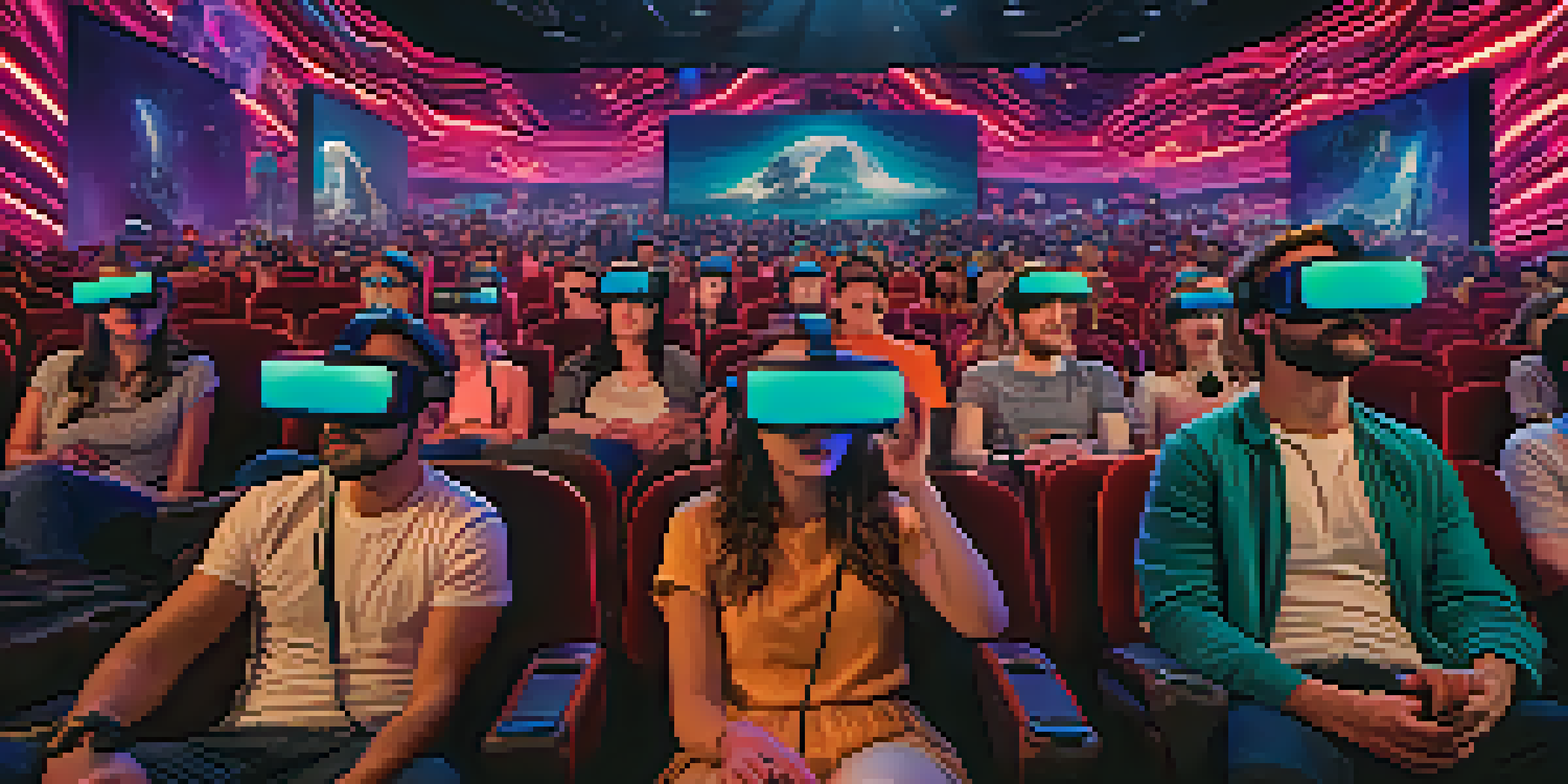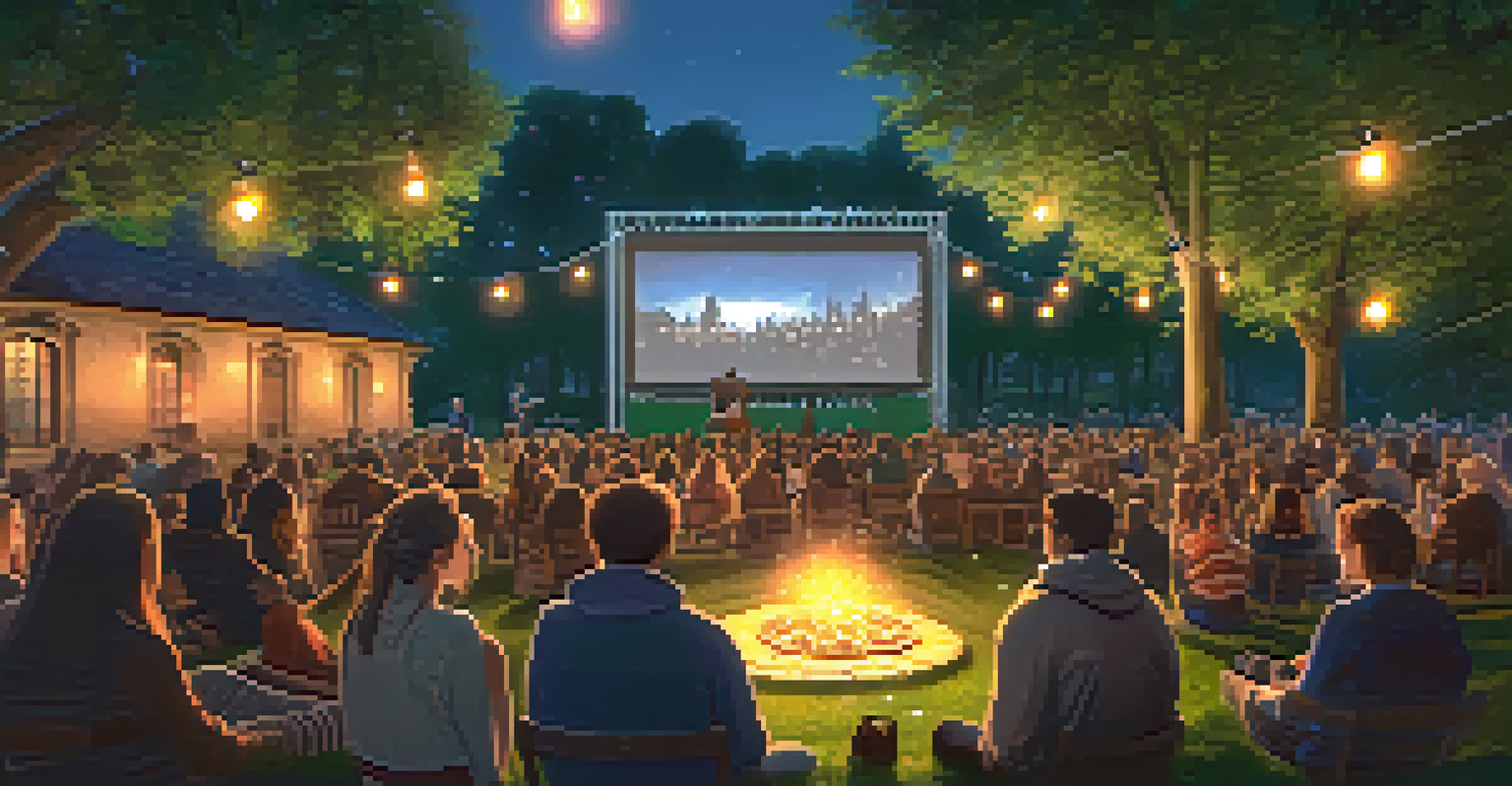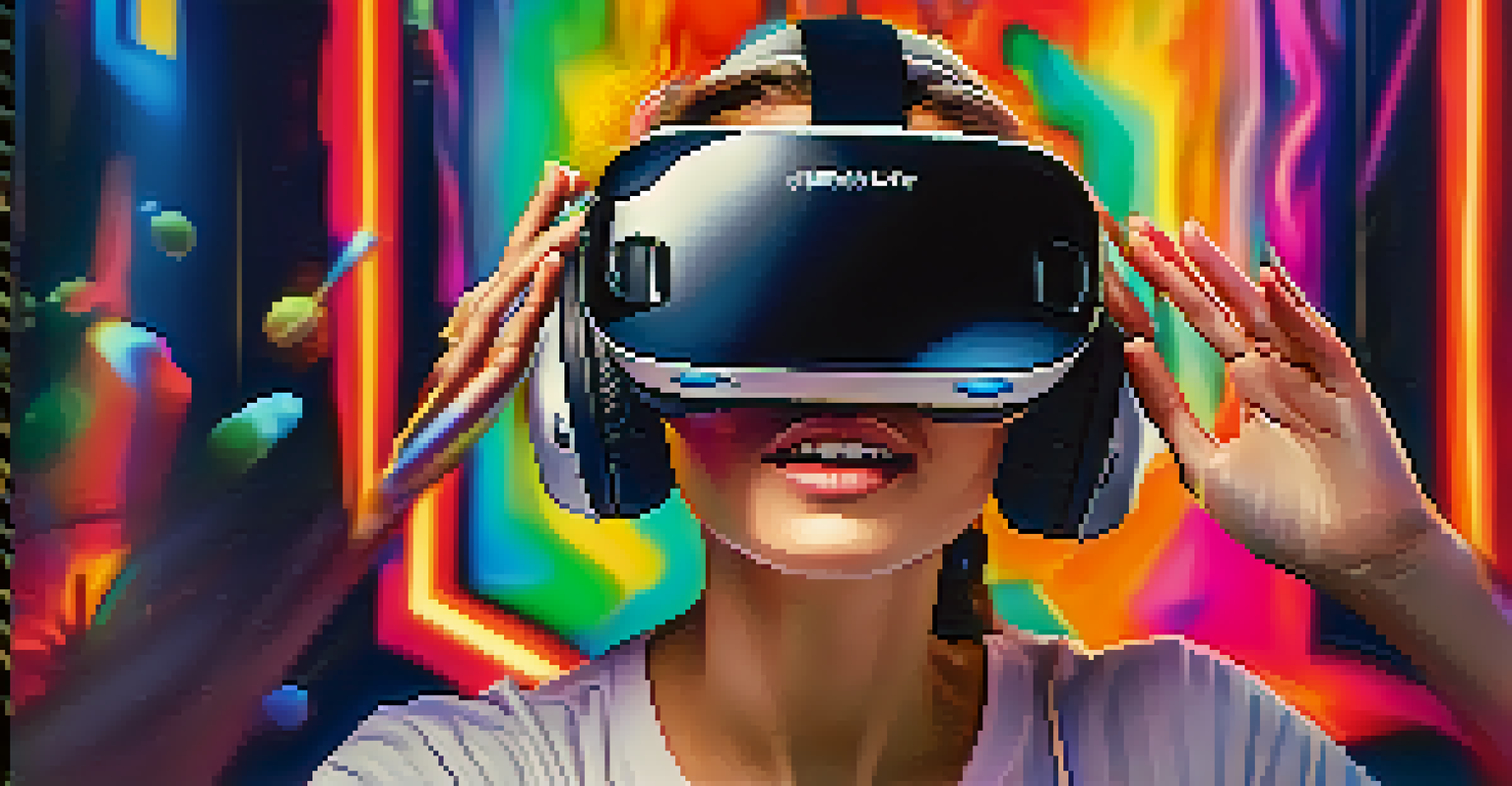The Psychology Behind Audience Engagement in Immersive Cinema

The Rise of Immersive Cinema: A New Era of Storytelling
Immersive cinema is revolutionizing the way stories are told. By blending elements of film, theater, and even virtual reality, it creates a rich, multisensory experience that captivates audiences. This shift from passive viewing to active participation draws viewers deeper into the narrative, making them feel like part of the story.
The beauty of immersive storytelling is that it allows audiences to lose themselves in stories, creating connections that are both personal and powerful.
As technology advances, filmmakers are finding innovative ways to engage audiences, such as incorporating interactive elements that allow viewers to influence plot outcomes. This not only heightens emotional investment but also fosters a sense of agency that traditional cinema often lacks. As a result, audiences are not just watching a film; they are experiencing it.
This new approach to storytelling taps into our innate desire for connection and engagement. It transforms the audience from mere spectators into active participants, enhancing their emotional and psychological responses to the narrative. Immersive cinema is thus not just a trend but a fundamental shift in how we engage with stories.
The Psychological Impact of Immersion on Viewers
Immersive cinema leverages psychological principles to deepen viewer engagement. One key aspect is the concept of immersion itself, which refers to the sense of being enveloped in a narrative world. When audiences feel immersed, their emotional responses become more intense, leading to a greater connection with characters and plot.

This heightened engagement can trigger a range of psychological responses, such as empathy and excitement. For instance, when viewers can see, hear, and even interact with the story world, they’re likely to develop a stronger emotional bond with the characters. This emotional investment can lead to a more memorable viewing experience.
Immersive Cinema Transforms Storytelling
By blending film, theater, and technology, immersive cinema creates a multisensory experience that engages audiences as active participants.
Moreover, immersive experiences can provoke a state of flow, where viewers lose track of time and self-awareness. This psychological phenomenon enhances enjoyment and satisfaction, making the experience feel more fulfilling. The deeper the immersion, the more potent the emotional impact, resulting in a lasting impression long after the credits roll.
Creating a Sense of Presence in Immersive Environments
One of the most fascinating aspects of immersive cinema is its ability to create a sense of presence. This refers to the feeling of being physically inside the cinematic experience, as if the viewer is part of the story. Filmmakers achieve this through carefully crafted visuals, sound design, and spatial storytelling techniques.
Technology is a tool that can enhance the human experience of storytelling, making it more engaging and interactive.
For example, utilizing surround sound can mimic real-life environments, making viewers feel as if they are in the middle of a bustling street or a quiet forest. Coupled with high-quality visuals, this sensory combination fosters an unparalleled sense of realism. Viewers become emotionally invested, reacting as if they were experiencing events firsthand.
This sense of presence can be further enhanced by interactive elements that allow viewers to influence the storyline. When audiences have the power to make choices, it enhances their connection to the narrative. This interactivity not only deepens emotional engagement but also fosters a personal connection to the story, making it more impactful.
The Role of Emotional Engagement in Audience Connection
Emotional engagement is at the heart of why audiences connect with immersive cinema. When filmmakers focus on evoking strong emotions—be it joy, fear, or sadness—they create a powerful bond between the viewer and the story. This emotional resonance is what keeps audiences coming back for more.
By crafting relatable characters and compelling narratives, filmmakers can tap into universal human experiences. For instance, a story about love, loss, or triumph resonates deeply, encouraging viewers to reflect on their own lives. This connection can be further amplified by the immersive elements that make viewers feel as though they are experiencing these emotions alongside the characters.
Technology Enhances Viewer Engagement
Advancements in VR and AR allow for dynamic storytelling, providing viewers with an unprecedented level of immersion and interaction.
Moreover, the emotional rollercoaster that immersive cinema provides can lead to catharsis, allowing audiences to release pent-up feelings. This therapeutic aspect of storytelling not only enhances enjoyment but also fosters a sense of community among viewers as they share their experiences and emotions together.
The Impact of Technology on Audience Engagement
Technology plays a crucial role in enhancing audience engagement in immersive cinema. Advancements in virtual reality (VR) and augmented reality (AR) have expanded the boundaries of storytelling, allowing filmmakers to create experiences that were once unimaginable. These technologies provide viewers with a new lens through which to explore narratives, making them feel like active participants.
For instance, VR headsets can transport viewers into fantastical worlds, offering a level of immersion that traditional cinema cannot match. This technological engagement not only entertains but also stimulates the imagination, encouraging audiences to explore new ideas and perspectives. The result is a richer and more engaging cinematic experience.
Additionally, technology facilitates real-time feedback and interaction, allowing filmmakers to adapt narratives based on audience choices. This dynamic storytelling approach creates a unique viewing experience each time, keeping audiences engaged and eager for more. As technology continues to evolve, so too will the ways in which we connect with stories.
Audience Participation: The Power of Interaction
Audience participation is a game-changer in the realm of immersive cinema. By allowing viewers to interact with the narrative, filmmakers create a more personalized experience, fostering a deeper connection with the story. This level of engagement encourages viewers to invest emotionally in the outcome of the narrative.
Interactive elements, such as making choices that impact the storyline, empower audiences and give them a sense of control. This sense of agency not only heightens emotional responses but also encourages repeat viewings, as audiences may want to explore different outcomes. It transforms the viewing experience into a shared adventure.
Audience Participation Builds Connection
Interactive elements in immersive cinema foster emotional investment and community among viewers, making the experience more personal and memorable.
Moreover, audience participation can lead to a sense of community among viewers. When people share their experiences and choices, it fosters discussion and connection, enhancing the overall impact of the cinematic experience. This communal aspect adds an extra layer of engagement, making immersive cinema a truly unique form of storytelling.
The Future of Immersive Cinema: Trends and Possibilities
As we look to the future, immersive cinema continues to evolve, driven by technological advancements and changing audience expectations. Trends such as interactive storytelling and the integration of AI are set to redefine audience engagement, providing even more immersive experiences. Filmmakers are exploring new ways to blur the lines between reality and fiction.
One exciting possibility is the emergence of location-based experiences, where audiences can explore stories in real-world settings. Imagine wandering through a city while interacting with characters and plots that unfold around you. This trend not only enhances immersion but also transforms the way we experience narratives.

Additionally, advancements in AI could lead to more personalized storytelling. By analyzing audience preferences, filmmakers may create tailored experiences that resonate deeply with individual viewers. The future of immersive cinema promises to be as engaging as it is innovative, ensuring that audience connection remains at the forefront of cinematic experiences.